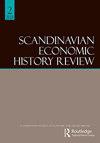寻找共同点:在两次世界大战期间重建斯堪的纳维亚货币联盟
IF 1
Q4 ECONOMICS
引用次数: 0
摘要
丹麦、瑞典和挪威组成的斯堪的纳维亚货币联盟(SMU)被称为“第一次世界大战前最成功的货币联盟”。它在全球化的第一个时代运转顺利,但被认为在第一次世界大战期间解体了。然而,在两次世界大战期间,本着加强斯堪的纳维亚中央银行内部合作的精神重建联盟的努力却被忽视了。事实上,斯堪的纳维亚各国央行经常召开会议,试图重建统一货币联盟。本文是对这些努力的第一次全面叙述。基于这三家中央银行的档案材料,它将回答三个不同层次的分析问题:尽管两次世界大战之间的经济动荡,中央银行如何考虑通过联盟进行未来的合作?既然结束斯堪的纳维亚合作的主要象征在政治上代价高昂,那么在重建联盟的过程中,央行还是政府才是主要角色?考虑到在国家主导地位和合作应对经济动荡之间取得平衡的必要性,以及所有斯堪的纳维亚国家都效仿英国在1931年放弃金本位制的事实,我们该如何考虑孤立主义与合作、小国行为与大国政策等方面?本文章由计算机程序翻译,如有差异,请以英文原文为准。
Finding common ground: rebuilding the Scandinavian Monetary Union in the interwar years
The Scandinavian Monetary Union (SMU) of Denmark, Sweden and Norway has been labelled ‘the most successful of the pre-World War I monetary unions’. It functioned smoothly throughout the first era of globalisation but is considered to have disintegrated during the Great War. However, attempts at rebuilding the union in the interwar years, in a spirit of increased intra-Scandinavian central bank cooperation, have been overlooked. In fact, the Scandinavian central banks frequently convened trying to re-establish the SMU. This paper is the first comprehensive account of these efforts. Based on archival material from these three central banks, it will answer questions on three different levels of analysis: How did the central banks consider future cooperation through the union despite interwar economic turmoil? As ending the leading symbol of Scandinavian cooperation would be politically costly, was it the central banks or governments who were the main actors in re-establishing the union? Given both the need to balance between national primacy and to cooperate to counter economic turmoil, and the fact that all Scandinavian countries followed suit as England abandoned gold in 1931, how are we to consider aspects such as isolationism versus cooperation and small state behaviour versus great power policies?
求助全文
通过发布文献求助,成功后即可免费获取论文全文。
去求助
来源期刊

SCANDINAVIAN ECONOMIC HISTORY REVIEW
ECONOMICS-
CiteScore
1.60
自引率
16.70%
发文量
20
期刊介绍:
Scandinavian Economic History Review publishes articles and reviews in the broad field of Nordic economic, business and social history. The journal also publishes contributions from closely related fields, such as history of technology, maritime history and history of economic thought. Articles dealing with theoretical and methodological issues are also included. The editors aim to reflect contemporary research, thinking and debate in these fields, both within Scandinavia and more widely. The journal comprises a broad variety of aspects and approaches to economic and social history, ranging from macro economic history to business history, from quantitative to qualitative studies.
 求助内容:
求助内容: 应助结果提醒方式:
应助结果提醒方式:


